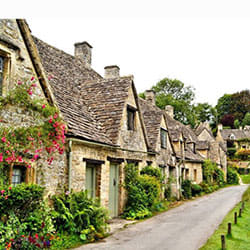But Mexico City, the capital of Mexico where I live, is a huge population center of some 21 million people—about as big as the Japanese city of Osaka. Pretty much the only place you can find cactus here is in landscaped parks and plazas.

Plaza del Zócalo, the central square in Mexico City
The weather here is mild year-round, but the hot season and the cool season are basically on the same schedule as Japan.
Rainy season lasts from May to October, while the dry season extends from November to April. During the rainy season, we frequently get evening rain—and sometimes sudden fierce showers that can rage on for hours. Usually the temperature drops suddenly when the rain comes.
The hottest time of year in Mexico City is March through May, but it’s not as intense as the Japanese summer, and a lot of places don’t even have air conditioning. The coldest time of year is December through February—just like Japan—but while you need a coat, we only find heaters in places such as restaurant terraces.
Even during the hottest months, it’s not like it’s blazing all day long. The temperature swings are intense, with the mornings and evenings staying cool and the summer heat only in the middle of the day. This is because the city sits high up at an elevation of 2,250 meters. Tokyo’s elevation is apparently only 40 meters; 2,250 meters is about as high as the fifth station of Mt. Fuji.
It’s so high that some people even experience altitude sickness when they visit. Most people are eager to try the delicious local cuisine and drink when they travel overseas, but the body is more sensitive to alcohol at high elevations, so it’s best to take it easy on your first night here.
There’s also less oxygen (about three-quarters of the amount at sea level), so even light exercise becomes a form of high-altitude training.
Still, people live their lives here the same as anywhere else. The children happily play outside, and plenty of people are out running or working out at the gym.
There’s an informational magazine that many Japanese people living in Mexico City including myself depend on. In fact, there are about 3,000 Japanese living here.

The large informational magazine on the left is published once a year and has to be purchased. It features a huge variety of information on Mexico as well as on Japanese grocery stores, Japanese restaurants, tourist attractions, Japanese doctors, and schools.
The smaller one on the right is published monthy. It’s a free circular that you can pick up in Japanese grocery stores and so on.
It’s worth checking out too, since it has information on Japanese restaurants and cafés as well as a monthly special feature on a particular place in Mexico.
These two magazines really have helped me out ever since I first moved to Mexico City.
There are lots of places that I actually ate at or visited thanks to these publications. I’ll be writing all about them in future posts, so stay tuned to learn about the many great things Mexico has to offer!






























































